On the way to become a teacher
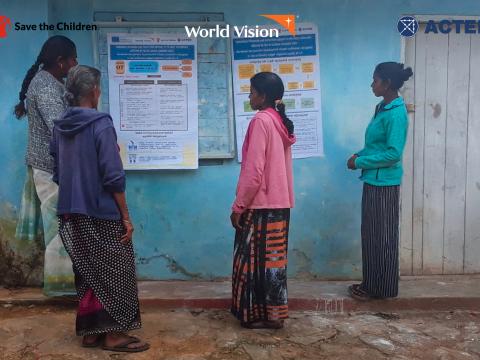
Madu (6) should be in school this year, but she started to sit up only two months ago. Standing or walking on her own is still a challenge. But her family is confident that she will become a teacher someday. She shows all the signs. She loves stationery. She loves scribbling letters. She loves to wear her sister’s glasses and peeping into her sister’s schoolbooks to check her work.
“Madu is better in studies than I. She is a faster learner,” says her sister Yadurshini, 12, who excels in studies herself.
“I think she would become a PT (physical training) teacher because she’s so good at exercising,” says her brother Danushan, 7, who loves sports. “Even I can’t beat her.”
“She would definitely make a great teacher,” says her mother. “But I would love to see her become a teacher for children like her.”
“Well, she is already my teacher,” says her father, “I’ve learnt a lot because of her – what it is to be a family, about the outside world, about doctors and medical procedures, and above all, the challenges faced by children like her.”
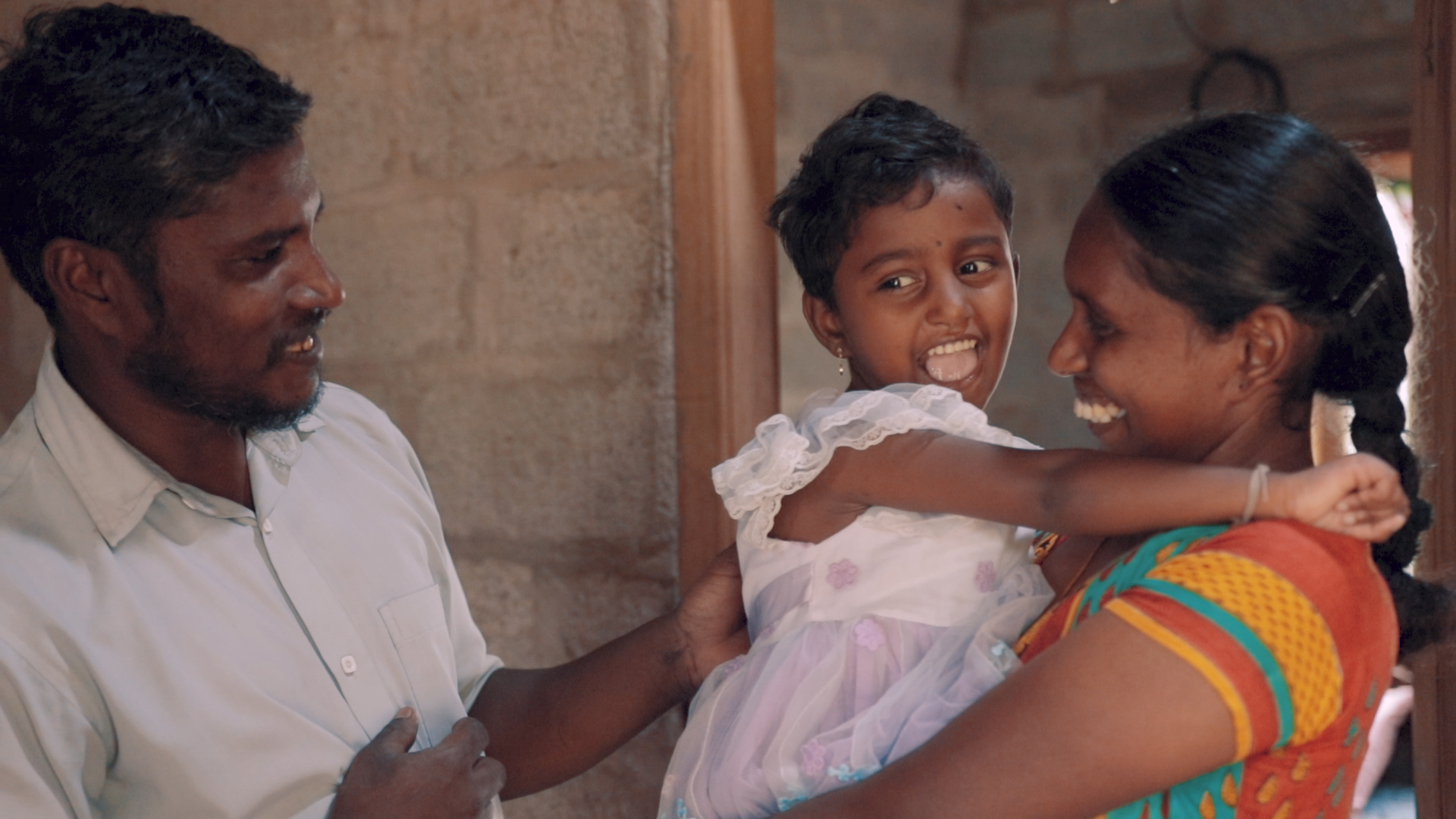
Noticing challenges
When Madu was six months old, her parents, Kanageshwari and Gnanasekaran, began to notice that she had challenges in her movement. She had not started to crawl, or even roll over by then.
“The doctor said he can’t say for sure what is wrong and that we will have to wait and see. He gave exercises for Madu,” says Kanageshwari, “Every day we kept hoping – today might be the day that she turns on her own or do something that she should be doing by now. She ate well when I fed her so I had hope.”
Kanageshwari and Gnanasekaran live in Lindula, Sri Lanka, with their three children. Their families have been a part of the tea estate labour force for generations. Kanageshwari plucks tea for a living and Gnanasekaran works as a kankanan (overseer) for tea plucker groups.
When the couple realised the difference in Madu’s development, Kanageswari opted to stay home to look after the baby. “It was difficult to manage with just my husband’s salary, but there was no option,” she says.
The diagnosis
As with all diagnoses on cerebral palsy, Madu’s didn’t come through easy either. Many doctors’ appointments later, she her cerebral palsy was confirmed. Although the doctors have written this in her clinic book, her parents can’t read English and still don’t know the name of the condition. But they are told about her challenges and what they can do to support her.
According to reports, in the developed world, you can find four cerebral palsy cases per 1,000 births. But in Sri Lanka, it is three to four times higher. Although cerebral palsy is the most common motor disability among children in Sri Lanka, not a lot of people are aware of it.
Cerebral palsy is not even recognised as a distinct type under disability on census forms and is only categorised as ‘other’. In rural areas, even most of the families who have a family member with cerebral palsy have little to no awareness about how to manage this condition.
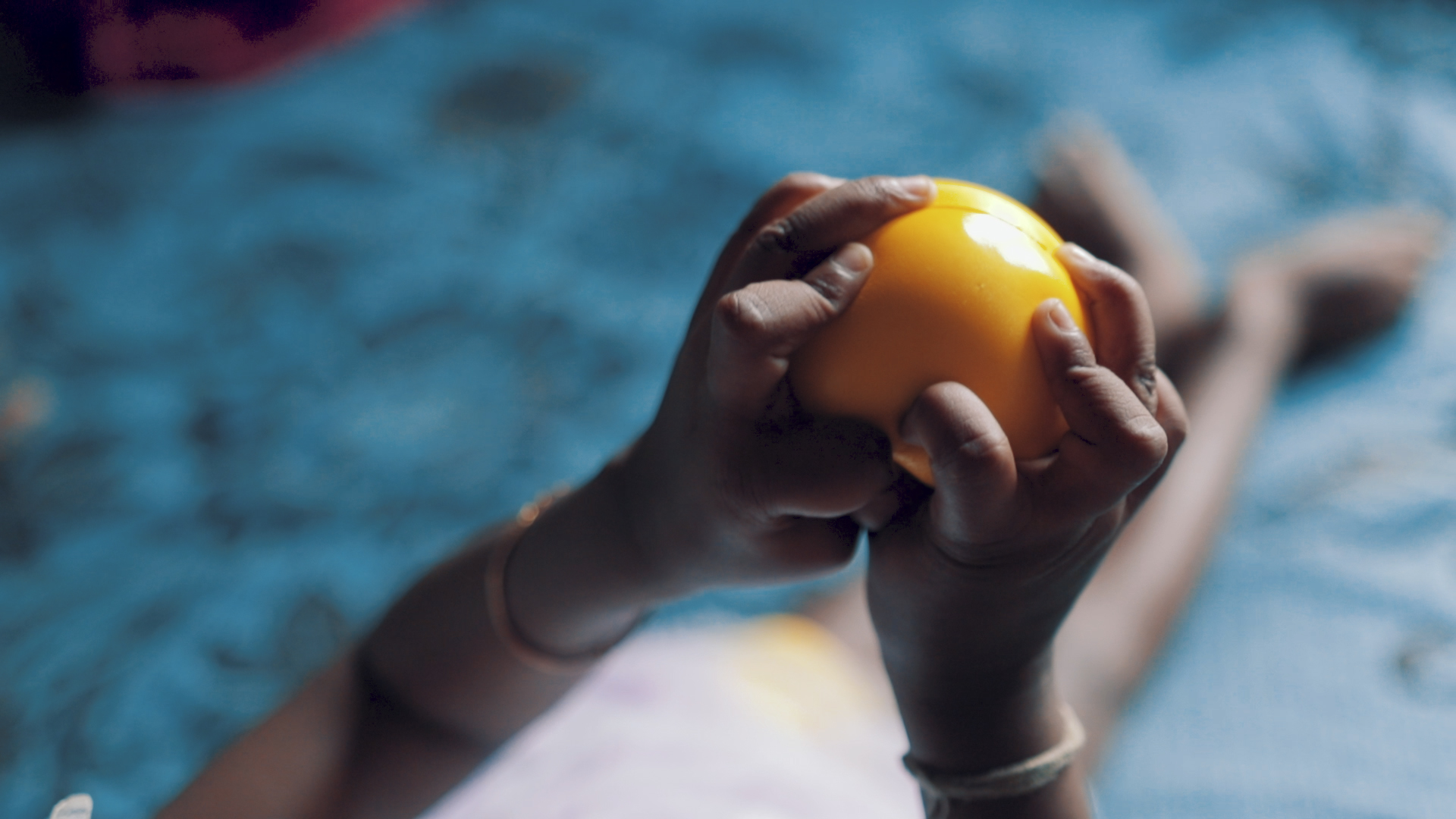
Since Madu’s birth, Kanageswari has been paying a visit to the nearest hospital in Nuwara Eliya every month. The hospital is 25 kilometres away and the trip costs LKR 500 (USD 2.7.) Every month, Gnanasekaran remembers to set aside this amount from his salary so that his daughter doesn’t miss the clinic.
“By the age of two Madu still couldn’t sit on her own,” says Gnanasekaran, “and she couldn’t balance her body - she would slide to aside.”
“The doctors we consulted said not to worry, that she is not sick, but they couldn’t tell us what was wrong,” says Kanageshwari, “They said a problem in the hip was making her imbalanced and unable to keep her foot properly on the ground. They said an operation in the hip would help her walk, but that Madu was still too small.”
Meanwhile, Yathurshini who was eight by then and Danushan, who was three, were confused about why their sister wouldn’t play with them.
“We explained to them that for now, they can talk to her and help her even though she doesn’t respond the way they want,” says Kanageshwari. “They understood and they started to look after her really well.”
Caring for Madu
Danushan decided to join Madu during her exercise time in the morning and Yathurshini started to speak short sounding words to her so that she would pick up. She also kept her close when she did school work and showed the pictures in her schoolbooks.
From the regular clinic in Nuwara Eliya, Madu was referred to the hospitals between 76 and 160 kilometres from their home. During these visits, Gnanasekaran went with Kanageswari. Each trip cost around 4,000 to 5,000 rupees (USD 22 - 27).
“As a family, we spend only on essentials and save the rest for Madu’s medical expenses,” says Gnanasekaran, “I don’t like to borrow money, so when I know there is a visit coming up to a hospital far away, I do whatever extra work I can find, to earn the money.”
Their monthly clinic date became three days a month to Nuwara Eliya, Badulla and Peradeniya each. While their parents went with Madu, Yadurshini and Danushan stayed home.
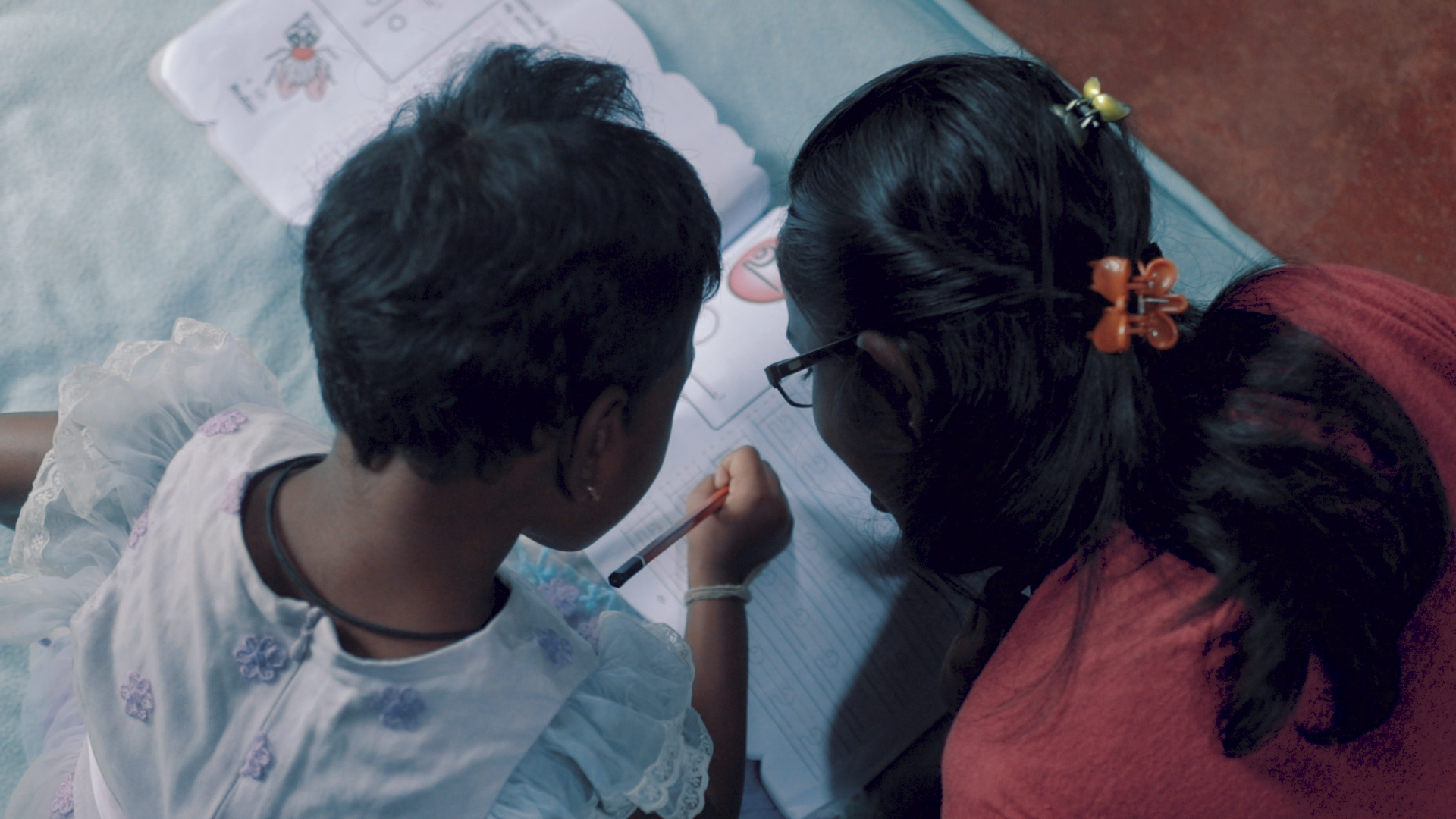
During this time, the estate commenced a special care unit for children with disability. The centre is managed by three trained teachers and a doctor visits the centre twice a week to provide occupational therapy for the children The centre is open from morning till evening so Kanageswari started to take Madu there during the day and she also could now return to work.
The physiotherapy and occupational therapy at the centre helped Madu a great deal in managing her muscles. She also began to pick up the sounds and the words Yadurshini was teaching. Her grip improved and Danushan taught her to hold the bat and hit a ball.
Madu was happy she could also now grip books. Her sister helped her to hold the pencil and scribble. She was determined to get her muscles to obey her.
“She is able to say amma (mother), appa (father), anna (brother), akka (sister) and some of the letters in the alphabet,” beams Yathurshini, “Sometimes she gets annoyed and starts to scold by making sounds and she sounds so cute when she does that.”
Learning to walk
This year an orthopaedic doctor from the Badulla hospital offered to operate on Madu’s hip. Since the operation, she is able to sit up balancing her body. Now that she can sit up, she is able to engage more with Yadurshini and Danushan. They play house, carrom (a board game) on their whiteboard and write letters.
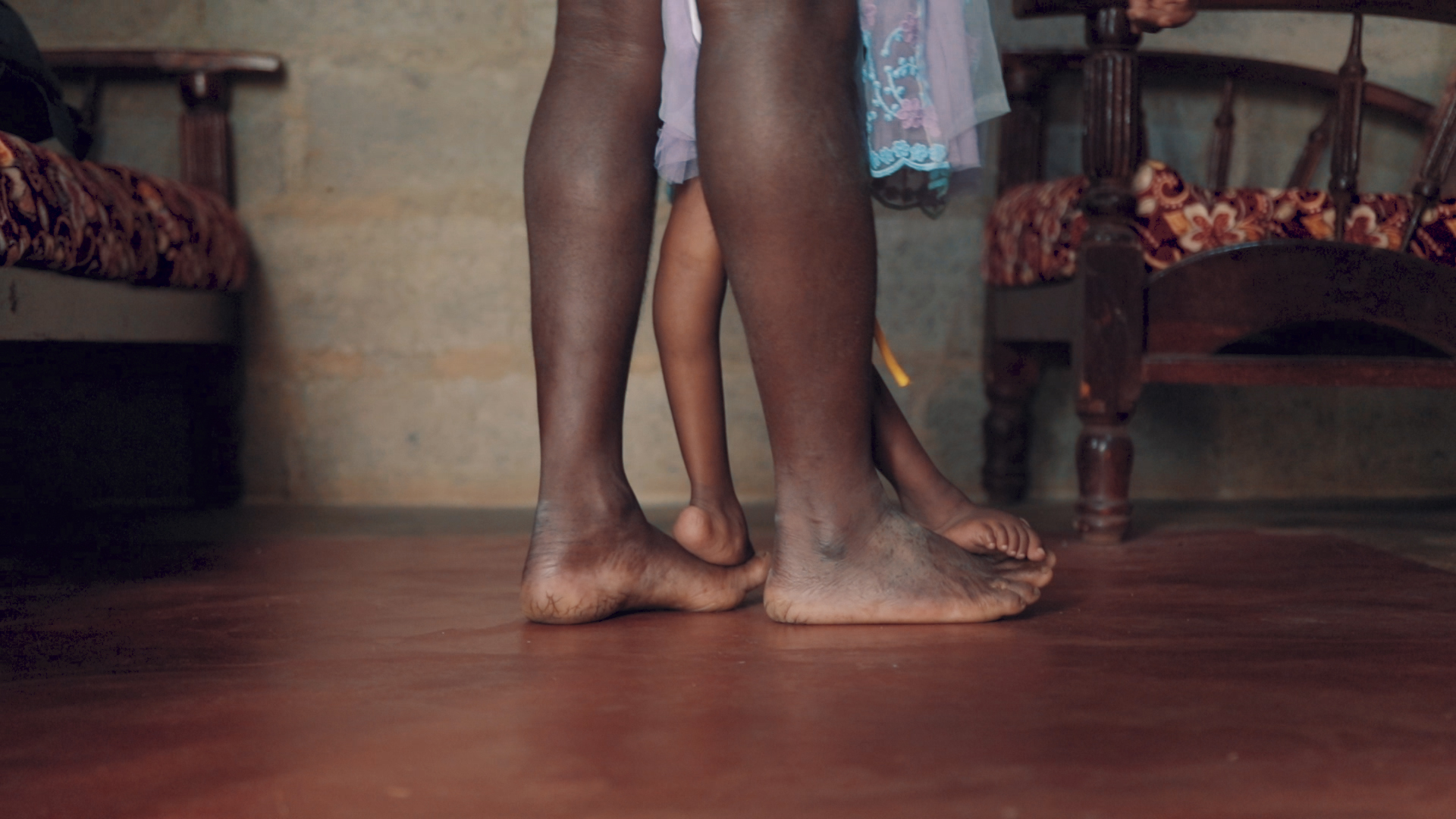
Her father helps her walk by walking her on his feet. She demands to walk more and more now.
Madu is also busy trying to catch up on her learning. She spends a lot of time with books, looking at letters, trying to write and demands her sister teaches her things from her schoolbooks.
“Every morning when I’m leaving for work, I ask her what she would want me to bring for her,” says Gnasasekaran, “She hands me a scribbled note. I guess she is asking for stationery. So I buy her a pencil or a new book and she is the happiest.”
“My only hope is to see her doing things on her own,” says Gnanasekaran. “Although I’m able to do things for her now - change her clothes, wash her – after she grows a certain age, I won’t be able to do that. Only her mother or sister will be able to help.”
Madu’s fierce determination is visible in all her actions and expressions. The whole family celebrates all her little victories and they are overflowing with hope for her.
World Vision Lanka has joined hands with the Merrill J Fernando Charitable Foundation of Dilmah on a new campaign to promote awareness about and support children with cerebral palsy.
Titled ‘Gift Hope,’ the campaign will first focus on creating awareness around this childhood disability and supporting parents with children with this form of disability to find assistance. In addition, the campaign will also aim at fundraising to support the most crucial accessibility and medical needs of these children in our working areas.
The Campaign further aims to help sensitise and build a supportive and inclusive society where these children can live to their full potential.
You can be a part of this campaign by sharing this knowledge and donating to support the most crucial needs of children with cerebral palsy.
donate now
Watch Madu's video